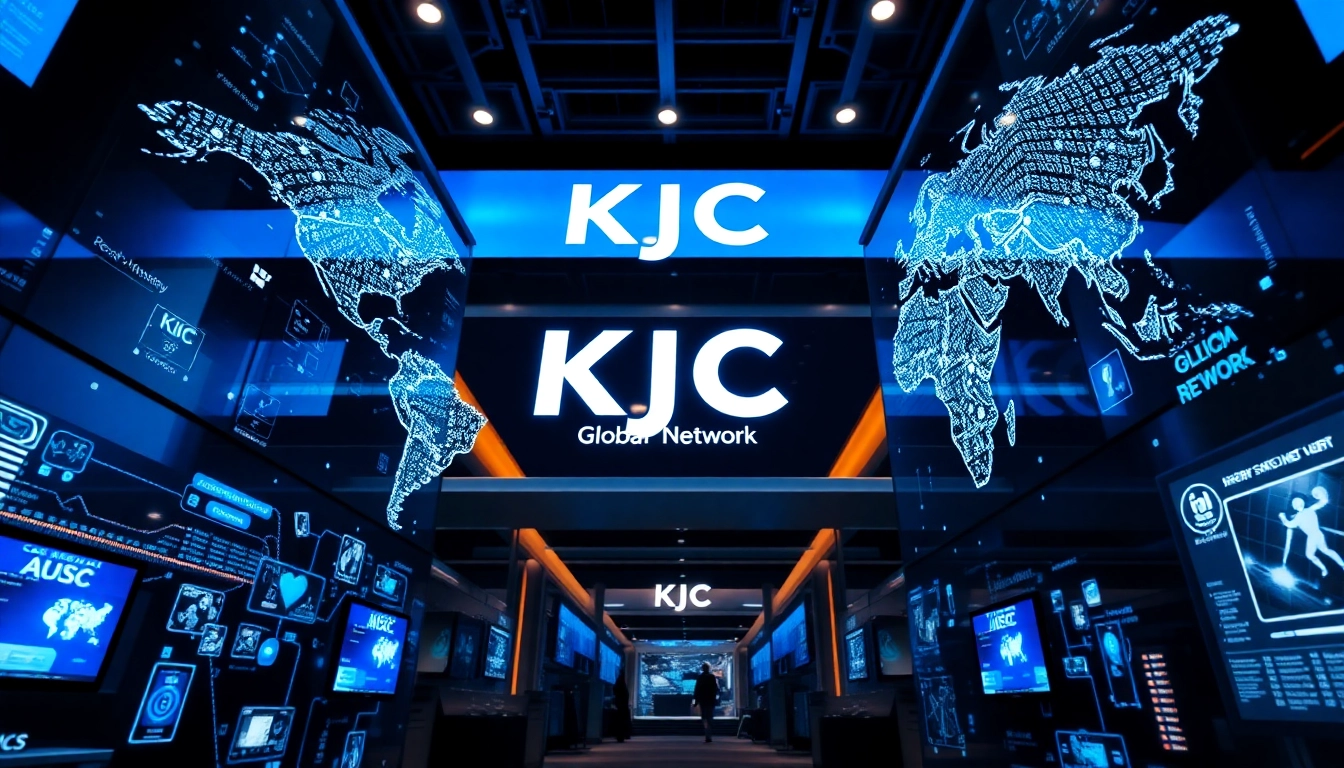Understanding Freelance Missions: Definitions and Key Concepts
What Are Freelance Missions and How Do They Work?
Freelance missions are project-based engagements assigned to independent professionals who operate outside traditional employment structures. Unlike traditional jobs, these missions are often flexible, time-bound, and focused on delivering specific outcomes. They work on a contracting basis, where clients outline their needs, and freelancers bid or are selected based on their expertise, experience, and rates. This model offers both parties the advantage of flexibility and specialized skill utilization.
freelance missions typically vary widely—from developing a website over a month to providing consultancy for a new marketing strategy. They enable freelancers to leverage their skills across different projects, build diverse portfolios, and often command higher rates based on their specialization.
The lifecycle of a freelance mission generally involves several stages: proposal submission, project negotiation, execution, and payment. Successful freelancers continuously refine their understanding of client expectations, deliver high-quality work, and manage their time efficiently to foster long-term relationships.
Common Types of Projects and Tasks for Freelancers
Freelance projects span across multiple sectors and skill levels, including web development, graphic design, content creation, digital marketing, data analysis, and software engineering. For example, a web developer might undertake a project to build a responsive e-commerce site, while a graphic designer could be tasked with branding assets for a startup.
Other typical freelance missions include mobile app development, UI/UX design, video editing, SEO optimization, and technical consulting. The diversity of projects allows freelancers to specialize in niche markets or diversify their skills to increase income streams.
It is crucial to understand project scope, deadlines, budget, and required expertise to successfully complete these tasks, which in turn enhances reputation and likelihood of repeat work.
Characteristics That Make a Mission Successful
Several key traits contribute to a fruitful freelance mission. Clear communication ensures both parties understand expectations, deliverables, and deadlines. Setting explicit goals and milestones helps track progress and adapt plans as needed.
Transparency in pricing and scope minimizes misunderstandings, fostering trust. Additionally, delivering quality work on time not only leads to client satisfaction but also opens doors for referrals and long-term collaborations.
Flexibility and adaptability are equally important, especially when unforeseen challenges arise. Successful freelancers maintain professional integrity, manage their time well, and communicate proactively throughout the project lifecycle.
Strategies to Find and Secure Top Freelance Missions
Proactive Techniques for Sourcing Reliable Projects
Proactivity is critical in the competitive freelance marketplace. Start by defining your niche and specialties, then identify target clients or industries where your skills are in demand. Outreach strategies include cold emailing, networking events, and participation in industry forums.
Leveraging existing relationships can also lead to high-quality referrals. Maintain an active presence on social media platforms, join relevant online communities, and contribute valuable insights to position yourself as an expert. Regularly updating your skills ensures you stay relevant and attract premium projects.
Additionally, consider partnering with agencies or platforms that connect freelancers with clients, expanding your reach beyond direct contacts.
Leveraging Online Platforms and Job Boards Effectively
Online platforms have revolutionized how freelancers find projects. Websites such as Upwork, Freelancer, and specialized industry portals offer access to thousands of freelance missions daily. To maximize success, optimize your profile—highlight your skills, showcase a compelling portfolio, and gather strong client reviews.
Tailor proposals to each project, demonstrating understanding of the client’s needs and offering clear solutions. Use keywords strategically for better visibility in platform searches, especially for high-paying missions.
Regular activity, timely responses, and delivering quality work help improve your ranking on these platforms, increasing your chances of securing top-paying projects.
Building a Strong Portfolio to Attract High-Paying Missions
A well-curated portfolio acts as your visual resume for clients. It should showcase diverse projects, highlight measurable results, and display your technical and creative skills. Include case studies, client testimonials, and detailed descriptions of each project to demonstrate your problem-solving approach and expertise.
For high-paying missions, focus on quality over quantity. Potential clients look for professionals with proven success and specialized skills—especially in trending technologies such as React, Python, or cloud computing.
Regularly update your portfolio with new work, certifications, or niche projects aligned with current market demands. This demonstrates ongoing growth and relevance, making you more attractive to premium clients.
Maximizing Earnings and Building Long-Term Client Relationships
Pricing Your Freelance Missions Competitively
Accurate pricing strategies are fundamental to earning a sustainable income while remaining attractive to clients. Research market rates for your skills and experience, considering both geographic and industry-specific factors. Premium skills in in-demand technologies like Vue.js, Python, and DevOps can command TJM (daily rates) from €600 to €1200.
Consider offering tiered packages or value-added services to justify higher rates. Always factor in your overhead costs, taxes, and desired profit margin when setting your rates.
Additionally, communicate your value clearly to clients—highlight your expertise, delivery speed, and quality. This confidence can justify premium pricing.
Negotiation Tips for Higher Rates and Better Terms
Negotiation skills are vital to maximize your earnings. Prepare by understanding your worth based on industry standards and your unique skill set. Use data and testimonials as leverage during discussions.
Aim for win-win outcomes—be flexible on payment structures if it means long-term collaboration. Don’t be afraid to walk away from underpaying projects; quality clients recognize your value.
Consider negotiating for bonuses, milestones, or retainer agreements for ongoing work, providing stability and increasing overall income.
Developing Repeat Business and Growing Your Reputation
Building lasting relationships with clients leads to repeat projects and referrals. Exceed expectations through consistent delivery, proactive communication, and reliability. Follow-up after project completion shows professionalism and commitment.
Offering exceptional customer service, such as free consultations or ongoing support, fosters trust. Maintain relationships through newsletters or updates about your latest skills and offerings, positioning yourself as a trusted partner.
Tools and Technologies to Manage Freelance Missions Efficiently
Project Management Applications for Freelancers
Efficient project management tools streamline workflow and improve client satisfaction. Platforms like Trello, Asana, and Monday.com help organize tasks, set deadlines, and track progress transparently. For complex projects, advanced tools like Jira offer extensive issue tracking and integration capabilities beneficial for software development missions.
Choose tools that integrate with your communication and file-sharing platforms to create a seamless working environment.
Time Tracking and Invoicing Solutions
Accurate time tracking is essential for billing and productivity analysis. Software such as Toggl, Harvest, or Clockify allows freelancers to record billable hours effortlessly. Automated invoicing tools like FreshBooks or Wave ensure timely, professional billing compatible with multiple currencies and tax environments.
Automating these processes not only saves time but improves cash flow management and reduces administrative burdens.
Communication Tools to Maintain Client Engagement
Clear, consistent communication fosters trust and facilitates project success. Utilize tools such as Slack, Microsoft Teams, or Zoom for real-time collaboration and meetings. File sharing platforms like Google Drive or Dropbox keep project assets accessible and organized.
Maintain transparency by regularly updating clients on progress, challenges, and next steps, ensuring alignment throughout the project’s lifecycle.
Measuring Success and Continuing Growth in Freelance Missions
Metrics to Track Performance and Income Growth
To assess your freelancing success, monitor key performance indicators such as client satisfaction, repeat business rate, average project size, and income growth over time. Analyzing these metrics guides strategic decisions, like expanding skill sets or targeting higher-paying niches.
Tools like spreadsheets or dedicated analytics platforms can help visualize your progression and identify areas for improvement.
Adapting to Market Trends and In-Demand Skills
The freelance market continuously evolves with technological advancements and industry shifts. Staying current involves ongoing training, certification, and participating in relevant communities. For example, mastering trending technologies like Svelte, TypeScript, or cloud deployment can significantly boost your marketability.
Attend webinars, read industry blogs, and collaborate with peers to anticipate market needs and adjust your service offerings accordingly.
Case Studies of Successful Freelance Missions
One illustrative example is a freelance frontend developer who carved a niche specializing in Vue.js and React. By consistently delivering high-quality micro-projects and maintaining strong client relationships, they secured long-term engagements with rates exceeding €800 per day, leading to an annual income surpassing €200,000.
Another case involves a data scientist who capitalized on AI and cloud knowledge, consistently securing projects through targeted marketing and showcasing case studies. These examples demonstrate that dedication, specialization, and continual learning are key drivers for success in freelance missions.



